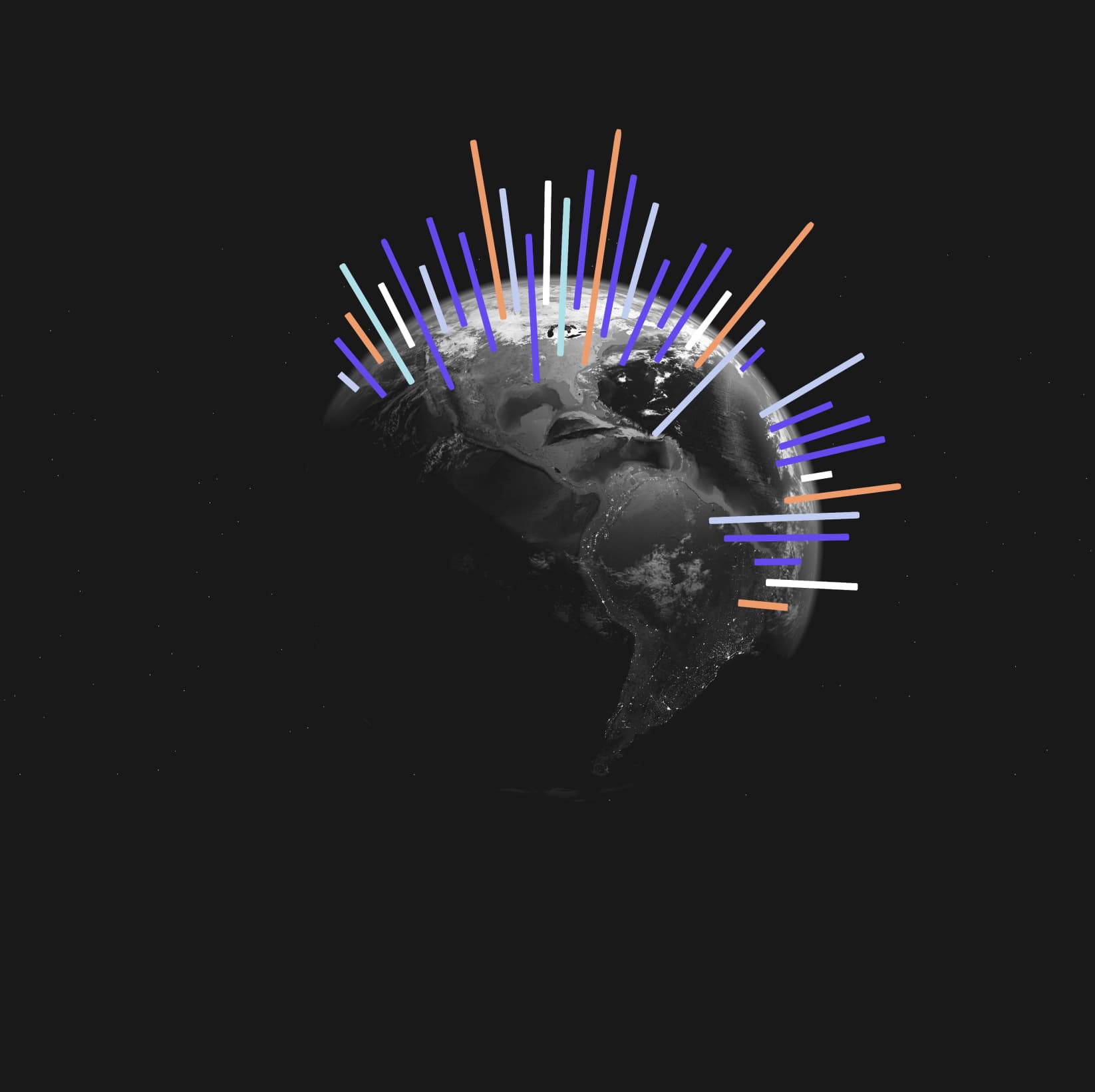Have you ever wondered how some businesses seem to thrive during specific seasons while others struggle to keep up with fluctuating demands? What if there was a way to predict and profit from seasonal trends with unprecedented accuracy?
The answer is simple: market seasonality software.
Market seasonality software or a market seasonality platform is a cutting-edge solution that analyses historical data and identifies recurring patterns of demand and behaviour in various industries throughout the year. This powerful tool empowers businesses to align their strategies with consumer behaviour, optimise inventory levels, and tailor marketing efforts for maximum impact during peak seasons.
Unexpected seasonal trend in the UK: Avocado Craze in the Summer: During the summer months, the UK experiences an avocado craze, with a surge in demand for avocado-based dishes and products. From avocado toast to avocado smoothies, cafes and restaurants across the country cater to the growing popularity of this nutritious fruit during the warmer season.
In this article, we will explore the significance of market seasonality, the impact of seasonal trends on business revenues and profits, and the challenges businesses face without data-driven insights. We will also recommend the perfect market intelligence partner (Hint: it’s Trendata) and provide you with some helpful tips to get started with seasonality analysis.
Let’s dive in!
Understanding Market Seasonality
Market seasonality is the phenomenon where certain industries and product categories experience fluctuations in demand, sales, and consumer behaviour at specific times of the year. These fluctuations occur consistently and predictably, allowing businesses to anticipate and prepare for periods of increased or decreased activity. For example, Grooming devices peak around Father’s Day, and gaming consoles peak around Black Friday within the electronics category.
Seasonality can be observed in various sectors, such as retail, tourism, agriculture, and fashion, where customer preferences tend to align with the changing seasons. For instance, the demand for winter clothing rises during colder months, while the demand for beachwear surges during the summer.
Why Seasonality Occurs in Various Industries
Several factors contribute to the occurrence of seasonality in different industries. Some common reasons include:
Weather and Climate Changes:
Weather conditions significantly influence consumer behaviour. For example, cold weather prompts the purchase of heaters and winter clothing, while warm weather leads to increased demand for air conditioners and swimwear.
Holidays and Celebrations:
Special occasions like Christmas, New Year, Valentine’s Day, and other cultural festivals drive changes in consumer spending patterns, with increased demand for related products and services.
School and College Calendar:
The academic year influences the timing of family vacations, back-to-school shopping, and other activities, impacting various industries.
Agricultural Seasons:
Seasonal crops and produce affect the supply chain and prices of food products, leading to fluctuations in demand for certain food items.
Unexpected seasonal trend in the UK: Unicorn Delights: The UK has been swept up in the magical world of unicorns. From unicorn-themed desserts and drinks in cafes to unicorn-inspired beauty products in stores, this whimsical trend captures the imagination of both children and adults throughout the year.
Impact of Seasonality on Business Revenues and Profits
Seasonality can significantly impact a business’s revenue and profitability. Understanding and adapting to seasonal trends can lead to increased sales during peak periods and help mitigate losses during slow seasons. By aligning marketing efforts and trading calendars with seasonal patterns, businesses can optimise their revenue potential.
Challenges Businesses Face in Managing Seasonality Without Data-Driven Insights
Without data-driven insights, businesses may encounter several challenges in effectively managing seasonality, including:
Overstocking or Understocking:
Without accurate predictions, businesses may end up with surplus inventory during slow seasons or insufficient stock during peak periods, leading to financial losses and customer dissatisfaction.
Ineffective Marketing Strategies:
Seasonal marketing campaigns that do not resonate with consumer trends may fail to attract customers and achieve desired results.
Inability to Meet Demand:
During peak seasons, businesses may struggle to meet the surge in demand, leading to missed sales opportunities and potential brand damage.
Unpredictable Cash Flow:
Fluctuations in revenue due to seasonality can create cash flow challenges, making it difficult for businesses to plan and allocate resources effectively.
Unexpected seasonal trend in the UK: Hygge Lifestyle in Winter: When winter sets in, the Danish concept of hygge becomes a trending lifestyle choice in the UK. People seek out cosy home decor, soft blankets, and scented candles to create a warm and inviting atmosphere during the colder months.
RELATED: Exploring the Growing Importance of AI Predictive Insights in Market Data Analysis

Leveraging Market Seasonality Software
Market seasonality software is a specialised tool designed to analyse historical data, identify seasonal patterns, and forecast future trends based on these patterns. It leverages various data sources to provide valuable insights into consumer behaviour and preferences during different times of the year.
Businesses can use market seasonality software to gain a deeper understanding of customer demands, align their marketing efforts, and adjust inventory levels to meet seasonal peaks and troughs.
How Market Seasonality Software Helps in Predicting Seasonal Trends
Market seasonality software employs sophisticated algorithms and statistical models to analyse vast amounts of data. By recognising recurring patterns and correlations, the software can accurately predict seasonal trends and their potential impact on various industries.
Identifying Patterns and Recurring Trends Through Data Analysis
Data analysis is at the core of market seasonality software. By aggregating and processing data, the software identifies seasonal patterns and trends. Through comprehensive data visualisation and reporting, businesses gain valuable insights into historical performance and future projections.
Unexpected seasonal trend in the UK: Handcrafted Gifts during the Holidays: During the holiday season, the trend of giving DIY handcrafted gifts gains momentum in the UK. People enjoy creating personalised presents, such as handmade candles, knitted scarves, or bespoke ornaments, adding a heartfelt touch to their holiday gift-giving.
RELATED: Unlocking Predictive Growth: The Top Tools for Market Analysis and Insight
The Role of Trendata in Seasonal Predictions
Trendata plays a pivotal role in empowering businesses to leverage market seasonality software effectively. As a robust market intelligence platform, Trendata offers a wealth of data-driven insights derived from its vast data sources and advanced capabilities.
Overview of Trendata’s Data Source and Capabilities
Trendata’s strength lies in its comprehensive data source, which encompasses over 5 billion search queries daily. By drawing from search engine data Trendata captures a wealth of information on consumer interests, preferences, and intent.
Through powerful data analytics, Trendata identifies emerging trends, tracks change in consumer behaviour and uncover valuable patterns that influence seasonal trends. Its capabilities extend beyond market seasonality to encompass market research, and trend forecasting amongst others.
How Trendata Aggregates and Analyses Over 5 Billion Search Queries Daily
Trendata’s data aggregation process involves collecting and collating massive amounts of online search data. By analysing this data, Trendata gains deep insights into consumer intent across numerous industries.
The platform employs advanced algorithms and machine learning techniques to process and interpret this vast dataset rapidly. By continuously refining its models, Trendata ensures the accuracy and relevance of its insights, providing businesses with reliable information for strategic decision-making.
Utilising Online Search Queries for Predictive Insights on Seasonal Trends
Online search queries serve as a powerful indicator of consumer behaviour and interests. Trendata recognises the significance of search data in understanding seasonal trends and predicting market shifts.
By analysing search query volumes and patterns during specific periods, Trendata can identify the rise in demand for products or services, forecast seasonal fluctuations, and anticipate consumer preferences during peak seasons. Businesses can then use this predictive information to optimise their offerings, marketing efforts, and inventory management.
Utilising Trendata for Seasonal Profitability
Trendata proves to be a game-changer for businesses looking to capitalise on seasonal trends and boost profitability. By harnessing the platform’s insights and predictive capabilities, companies can strategically align their sales, inventory, and marketing efforts to maximise returns during peak seasons.
The Value of Trendata’s Insights for Businesses
Trendata’s insights offer businesses a competitive edge in understanding consumer behaviour, preferences, and demands during different seasons. By having access to current and historical data, businesses gain valuable context to make informed decisions and capitalise on seasonal opportunities.
The platform’s data-driven approach enables businesses to spot emerging trends, anticipate shifts in consumer preferences, and fine-tune their strategies accordingly. Understanding the value of Trendata’s insights empowers businesses to optimise their operations and revenue generation during peak and off-peak periods.
Leveraging Trendata to Forecast Sales and Plan Inventory During Peak Seasons
Trendata’s predictive capabilities play a pivotal role in helping businesses forecast trading volume and plan inventory during peak seasons accurately. By analysing historical data on consumer behaviour and purchase patterns, Trendata can project future trading volumes with a high degree of accuracy.
Armed with these predictions, businesses can optimise their inventory levels, ensuring they have sufficient stock to meet increased demand during peak periods. By avoiding stockouts and overstocking, companies can minimise costs, maximise sales opportunities, and enhance customer satisfaction.
Optimising Marketing Strategies Based on Seasonal Search Trends
Trendata’s insights on seasonal search trends empower businesses to tailor their marketing strategies for maximum impact. By understanding which products or services are in high demand during specific seasons, companies can create targeted and relevant marketing campaigns.
For instance, a clothing retailer can use Trendata’s data to identify the most popular fashion styles during the summer and tailor their advertising and promotions accordingly. This approach leads to increased customer engagement, higher conversion rates, and improved return on marketing investments.
Unexpected seasonal trend in the UK: Virtual Travel Experiences: Embracing the convenience of virtual technology, UK residents explore virtual travel experiences. From virtual reality tours of famous landmarks to online cooking classes with international chefs, people in the UK can embark on virtual journeys from the comfort of their homes.

Tips for Effective Seasonal Trend Analysis
Conducting effective seasonal trend analysis is crucial for businesses seeking to capitalise on market seasonality. By following these key tips, companies can gain deeper insights into consumer behaviour and make data-driven decisions to optimise their strategies.
Identifying Relevant Seasonal Trends
Identifying and analysing relevant seasonal trends is the first step in conducting a successful analysis. By tracking specific trends related to seasonal products, services, or events, businesses can gauge consumer interest and intent during different times of the year.
Evaluating Search Trends Across Different Regions and Demographics
Seasonal trends can vary significantly across different regions and demographics. Therefore, it’s essential to evaluate search trends and consumer behaviour in specific geographical areas and demographic segments.
For instance, the demand for winter clothing will differ between regions with varying climates. Similarly, different age groups may exhibit distinct preferences during the holiday season. By segmenting data and analysing trends across diverse demographics, businesses can tailor their strategies to target specific audiences effectively.
The Importance of Current Data for Accurate Predictions
Current data are critical for accurate seasonal trend analysis. Consumer behaviour can change rapidly, and businesses need access to the most current data to make informed decisions.
Trendata’s ability to aggregate and analyse over 5 billion search queries daily ensures that businesses have access to up-to-date insights. This enables companies to spot emerging trends, respond to shifts in consumer behaviour, and adjust their strategies promptly for maximum impact.
Closing Thoughts…
The importance of predicting and profiting from seasonality cannot be overstated.
By leveraging market seasonality software, businesses gain a competitive edge, allowing them to align their strategies with consumer behaviour and capitalise on lucrative seasonal opportunities. This strategic approach not only enhances profitability but also strengthens the foundation for sustained growth.
From this perspective, Trendata is an indispensable partner for businesses seeking to unlock the potential of market seasonality software. The platform’s data-driven insights and advanced analytics equip businesses with the foresight to make informed decisions, ensuring they remain agile and responsive to market dynamics.







